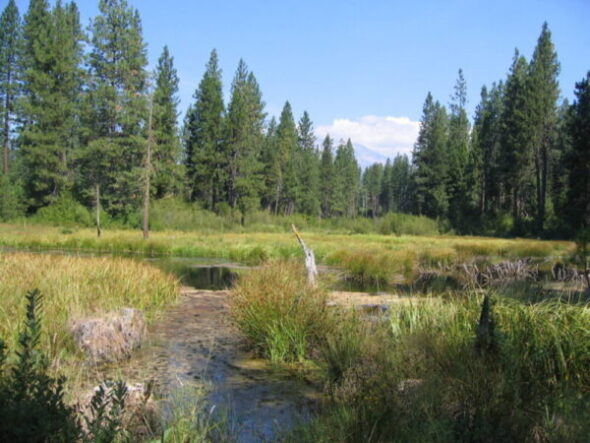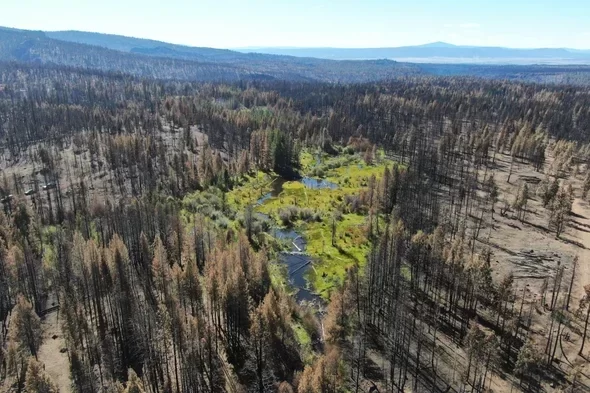FOREST FLASH May 2022
In Pacific Forest Trust’s e-newsletter, Forest Flash, we send you the most recent PFT news and updates on forests, clean water, climate, and wildlife. Subscribe here.


Beaver dams on this spring complex helped form extensive wet meadows that reduce fire threats and increase natural water storage.

Beaver dams protected this area of Oregon’s Dixon Creek from the 2021 Bootleg Fire. Credit: Charles Erdman/Trout Unlimited
Nicknamed “system engineers” for their role in managing water flows with small dams, beavers are enormously beneficial and cost-effective for climate resilience, watershed health, and biodiversity. Their water impoundments support wet meadows, slow flood events, create habitat for fish and are enormously impactful in stopping wildfires. This new program will support a concerted effort to “bring back the beaver” in partnership with local, state, and federal agencies, tribes and private landowners.

California’s water comes largely from 7 million acres in the far north state, the five watersheds that feed the Sacramento River and provide water to the state’s largest reservoirs: Shasta and Oroville. PFT’s Healthy Watersheds California describes how watersheds impact water supply and quality, and our Risk Assessment outlines how restoration and conservation in watersheds enhances climate resiliency, yields more water, and reduces fire impacts. The Senate recommends $1.5 billion specifically to improve the climate resilience and function of the state’s key watersheds and an additional $1.5 billion to address drought. PFT and a wide range of other stakeholders are urging that $500,000,000 of this be dedicated to a concerted effort in these primary source watersheds. This funding could significantly accelerate investments in natural climate resilience as well as rural sustainability. The multiple and diverse benefits of this approach are mirrored by the multiple stakeholders endorsing this investment and approach.

The Mt. Shasta Timberlands project will maintain the property as a working forest and add to the network of over 40,000 acres which PFT has already conserved with willing private landowners in this Mt. Shasta Headwaters area. It also secures lasting connections with millions of acres of the adjacent Shasta and Klamath National Forests–a rare opportunity to create a vast, integrated, conserved expanse while actively managing for climate resiliency, critical wildlife habitats, increased carbon stores, reduced wildfire risk and water security for fish, farms, and people. Further, this project conserves these vital lands while supporting timber and mill jobs in an economically disadvantaged county.
Maintaining this spectacular property in private hands and on the tax rolls, this conservation easement will guide management to protect public trust resources at a fraction of the cost of public ownership. It also ensures continued private investment in the property’s long-term stewardship. The Mt. Shasta Timberlands project is an exemplary partnership that promises integrated solutions to environmental challenges at landscape scale. With our dedicated partner Campbell Global, Pacific Forest Trust hopes to bring this conservation easement acquisition over the finish line by early 2023.
Give with confidence. Charity Navigator awarded Pacific Forest Trust a perfect score in finance and accountability.
